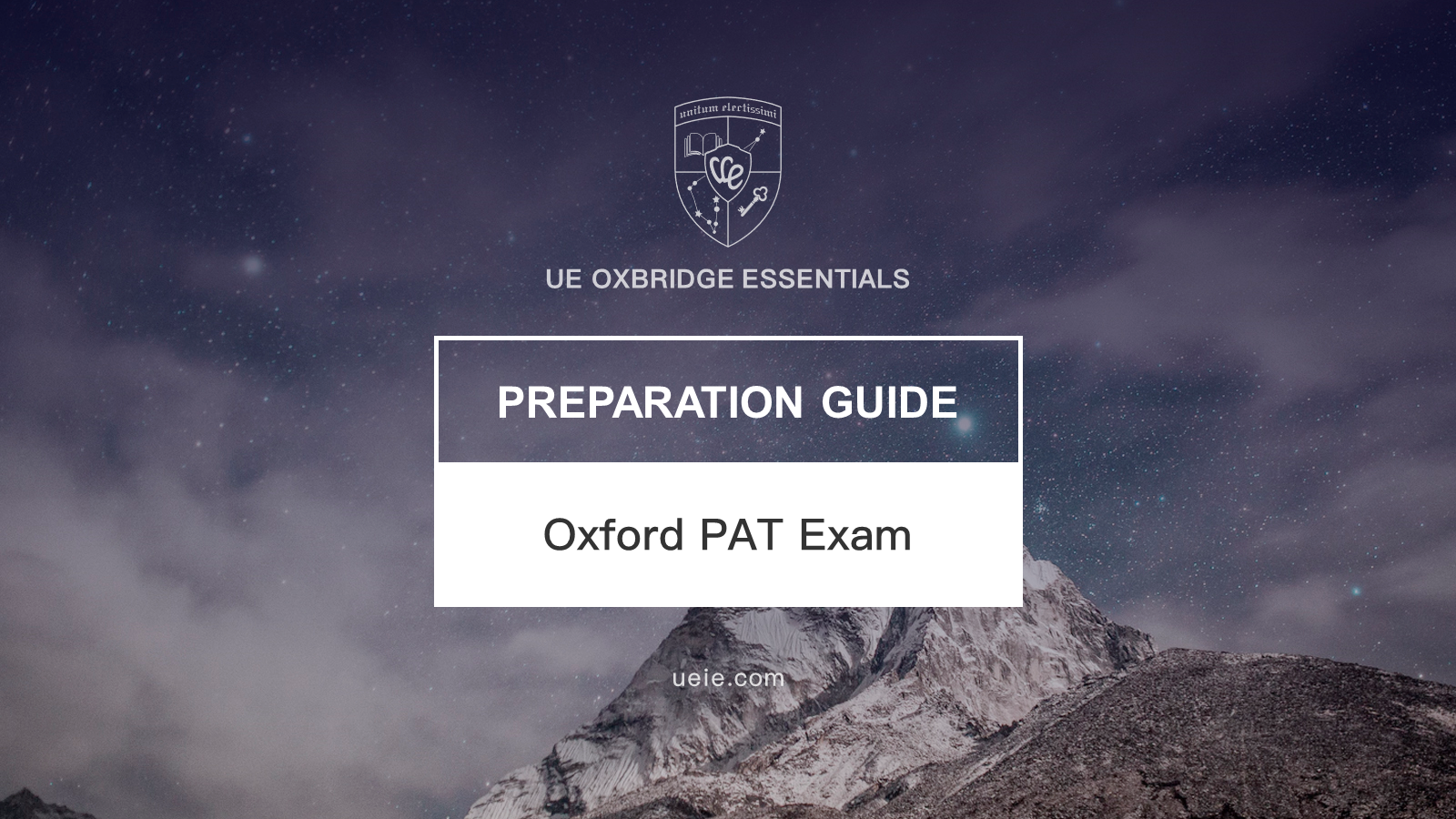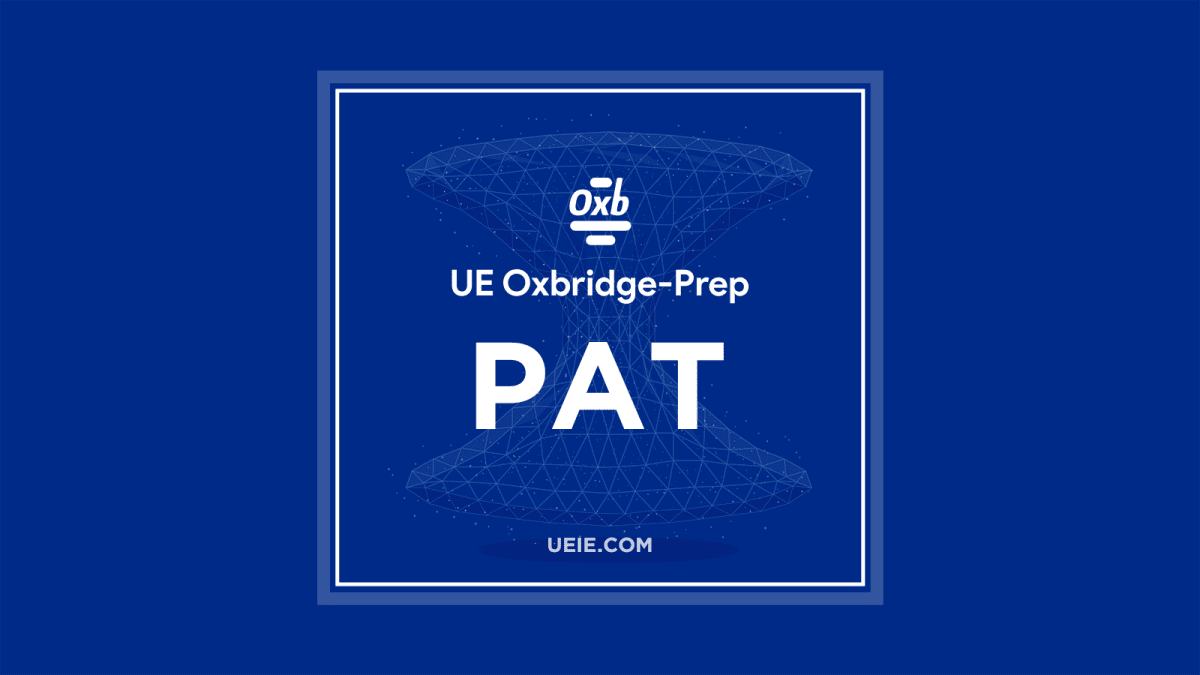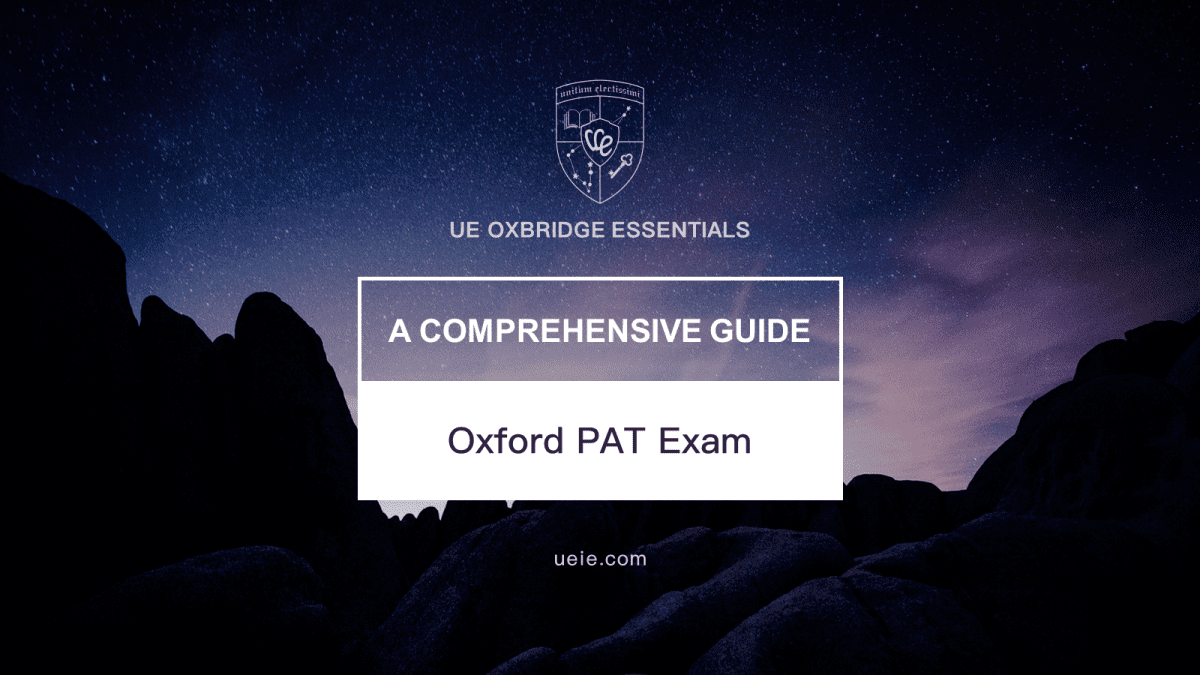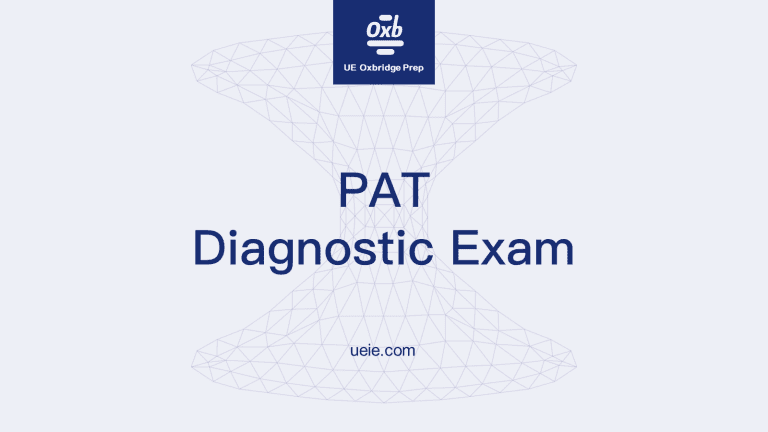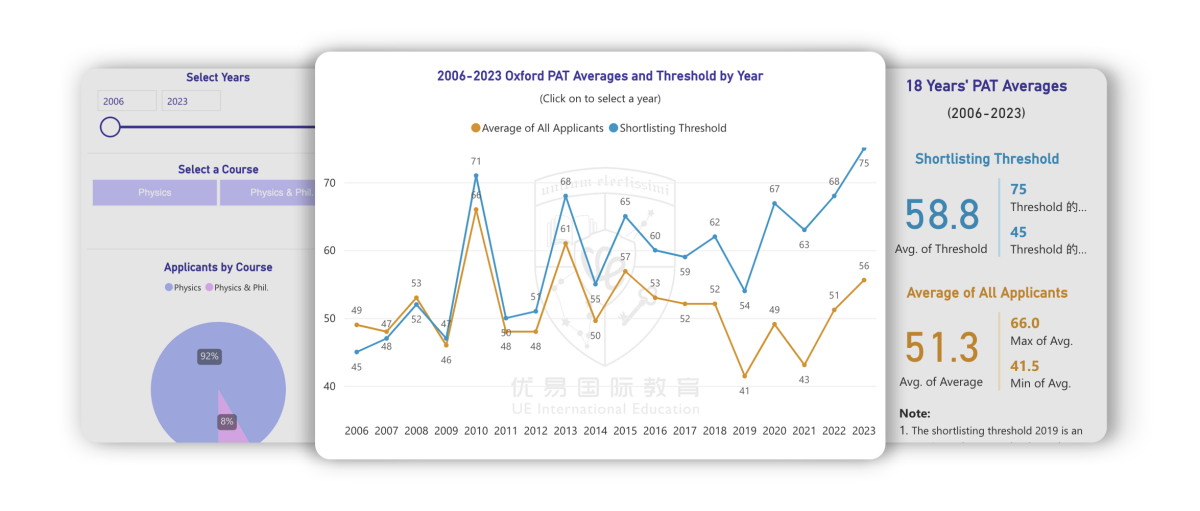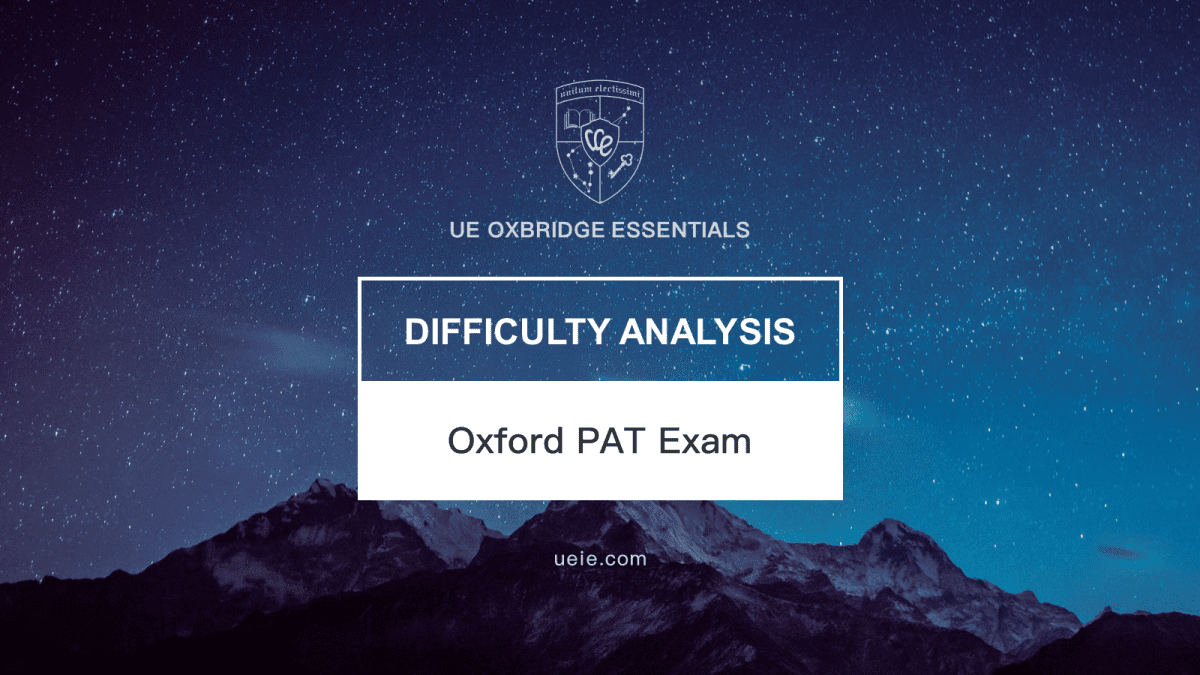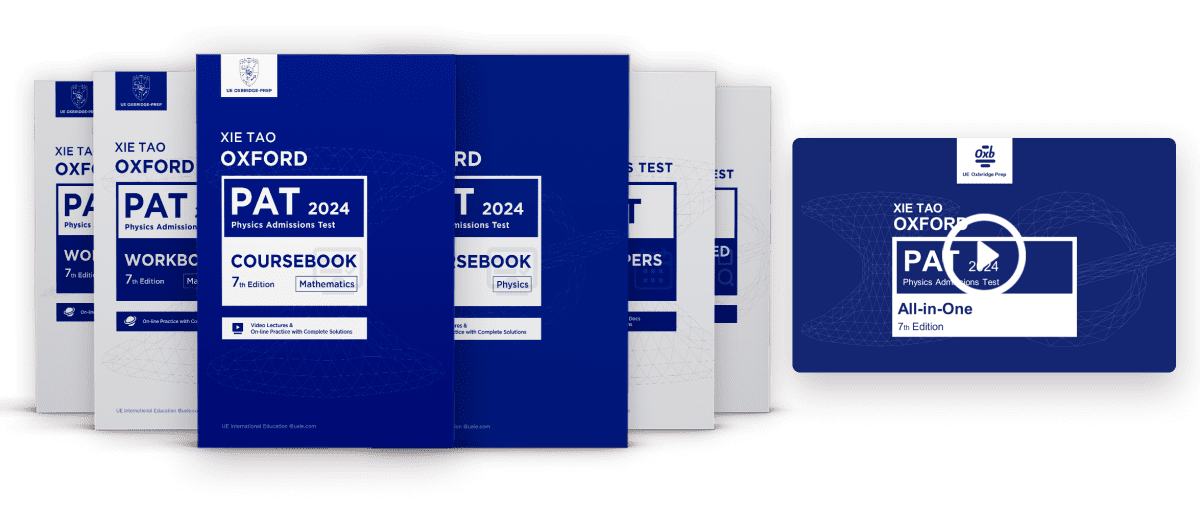After deciding to apply for physics, engineering science or materials science courses at the University of Oxford, you may be preparing for Oxford PAT and want to know how to plan your preparation time and what preparation strategies are more effective. If you have similar questions, this blog will help you.
I. Before you start preparing for Oxford PAT
Firstly, learning the basic information about PAT is important, which may include:
- Test date
- Which courses require the PAT test
- Test format
- Scoring method
- Scope of the PAT test
Secondly, download the latest preparation resources from the PAT official page, including:
- The latest PAT syllabus
- Past papers (PAT does not provide official solutions)
- Sample questions
What’s more, you need to know that the PAT test changes every few years, such as revising the syllabus and changing the test structure and question types.
Therefore, it is necessary for you to know the latest test policies to avoid misunderstanding the test format, scoring method and test scope before using the past papers, so as to improve efficiency when you prepare for Oxford PAT test.
You may download our collections of past papers via the test prep page as follows.
For more information and further understanding about the PAT test, please refer to the blog “Oxford PAT Test: A Comprehensive Guide”.
II. What knowledge is required when preparing for Oxford PAT test?
One A4 paper is enough to write down the entire PAT syllabus, and it can only be used as a rough reference in my personal opinion. Because every year, there are several questions that go beyond the syllabus, and more questions involve test points that are not explained in the syllabus. But there is no need for anxiety – most of the test points are still within the scope of A Level mathematics and physics.
1. Do I need to study A Level Further Maths in advance?
No. The PAT tests A Level Maths instead of Further Maths. Therefore, you do not need to worry about being disadvantaged in the PAT test without studying Further Maths in advance.
2. Do I need to study A2 Physics in advance?
Yes, but you don’t need to study all A2 Physics knowledge. PAT Physics will involve some physics knowledge. However, you don’t need to learn all the A2 Physics knowledge before the PAT test or even the summer vacation. After all, the preparation time is limited, and the knowledge of A2 Physics at each test centre is somewhat different. It is not worth spending time learning physics knowledge that is not highly relevant.
3. Can AP Physics cover the contents in PAT?
A small amount of knowledge is not covered. The combined course of AP Physics C Mechanics + AP Physics 2 can basically cover most of the physics test points of PAT, which is higher than the coverage rate of other AP Physics combined courses. However, some PAT test points, such as astronomy, are not included in AP Physics courses.
4. Can IB Physics cover the contents in PAT?
The IB HL Physics course comprehensively covers the PAT syllabus, but there may be some knowledge you have not learned before the test, so you must study the relevant topics in advance.
5. Is the experience in physics competitions helpful to preparing for Oxford PAT?
In recent years, the trend of physics questions in PAT test has developed towards competition. The difficulty of questions is getting closer and closer to the level of British Physics Olympiad BPhO 1, and new question types often appear. Therefore, if you have carefully prepared for BPhO 1, you will have a considerable advantage when preparing for Oxford PAT. Suppose you have no experience in such competitions or have not carefully prepared for BPhO 1. In that case, I recommend supplementing your study of relevant content during the Oxford PAT preparation stage.
For further information on PAT test question trends, please refer to my blog “Oxford PAT Secrets: An In-depth Research.”
III. What maths and physics abilities are needed to get a high score on PAT?
The PAT test comprehensively tests students’ physics literacy and also requires excellent ability to apply mathematical knowledge and methods. Students who achieve high scores in PAT must have outstanding skills in physical thinking, logic for solving physical problems, mathematical calculation, and transferring knowledge in new situations.
1. High level of physics thinking
Sometimes, we also call this level of thinking “perception”. Generally speaking, the higher the level of thinking, the deeper the understanding of fundamental physical concepts and physical laws, and the stronger the ability to comprehensively apply physical knowledge to solve complex and novel problems. This ability is not only related to the interest in learning physics and the accumulation of physics knowledge but also to the way and habit of thinking about problems.
2. Logic of solving physical problems
Generally speaking, solving physical problems starts with models. Each type of model has corresponding methods, but the underlying logic of these methods is the same. That is, complex physical questions can be easily solved after mastering the underlying logic of solving physical problems and being familiar with the models of various questions.
3. Excellent mathematical calculation ability
The PAT allows the use of calculators that meet the specifications, but this does not mean that you can rely on a calculator for any calculation. I usually emphasise to my students to refrain from using a calculator, except when it comes to the final step of the final result and it is inconvenient to do manual calculations such as square roots or huge numbers. You should be aware that not all of the computational processes of a question can be solved with a calculator, and relying on a calculator will not increase your speed of solving the questions.
4. The ability to transfer knowledge in new situations
Every year, there are one or two questions in the PAT that are relatively new and difficult, which are the key to widening the gap between high-level competitors. Therefore, some students have developed a utilitarian training method: concentrate on practicing these questions and learning their solutions, thinking that as long as they practice enough, they will be able to solve these difficult questions and get high scores on PAT test.
In fact, these questions require the ability to transfer the most basic concepts and physical laws to new situations. The so-called “transfer” is organizing the relevant knowledge according to a certain logic and applying it to solve difficult questions. In a word, the comprehensive application of basic concepts and methods is the main focus of the Oxford PAT preparation.
The high-scoring PAT students I have taught all followed the key points mentioned above and worked hard to practice basic skills. By the late preparation stage, they can solve all kinds of difficult questions easily and smoothly.
IV. 5 steps to set a reasonable goal for Oxford PAT test
Setting a reasonable goal is the first step towards success. It is recommended to follow the steps:
1. Refer to the PAT score line and PAT average score for interviews of Oxford Physics courses
Students applying for Oxford’s Engineering Science and Materials Science courses can also refer to this score line. Generally speaking, the PAT scores for these three courses are as follows: Physics>Engineering Science > Materials Science. However, the score differences are not that big.
2. Taking an assessment test
Most students have already mastered the basic mathematics knowledge required before preparing for Oxford PAT. Through the test, they can diagnose the problems in the current mathematics learning process and make a preliminary assessment of their mathematics level. It is recommended to:
- Use past papers from three years ago instead of the last three years, as these will be used for pre-exam practice and are extremely valuable.
- Print the paper in advance with pens and other materials ready. If you have to take an online computer-based test, you can take the online assessment test through the diagnostic test link below.
- Simulate actual exam scenarios and the test is limited to 2 hours to complete.
- Score according to the answers and scoring criteria. If there are no scoring criteria or you feel unsure about how to score, ask a professional teacher to evaluate.
- Keep the assessment test papers well to facilitate the teacher’s evaluation.
3. Evaluate your assessment test scores
View the score lines of Oxford PAT tests in previous years through the link below and check which level you achieved on the assessment test. It is important to remember that your assessment test scores do not indicate the scores you can achieve when taking the real PAT test. By working hard to prepare for Oxford PAT test, you will be able to achieve a better score than the assessment test.
4. Understanding how difficult the test is and it's changing trends
After taking the assessment test, you may have a rough idea about the PAT test’s difficulty and your current mathematics and physics level. At this time, you may also have a preliminary evaluation of how many scores you will achieve in the future.
But I still recommend you to have a further understanding of the difficulty of the PAT test and the changing trend of test difficulty in recent years before setting your goals. For more information, please refer to the blog “Oxford PAT Difficulty Analysis”.
5. Improve your mindset and set a reasonable goal
Actually, there is no standard answer to this question, as the PAT score is only one of the factors that determine whether you are admitted and the admission also depends on factors such as interview performance. There are students who are rejected with a PAT score of more than 90, and there are also many who are admitted with a PAT score of about 70. However, one thing is certain – the higher the PAT score, the more likely to be admitted.
Many students and parents still ask me to estimate the admission scores every year. I can only combine the admission cases of previous years and the analysis of PAT scores over the years to give a set of PAT score lines suitable for Chinese students:
The above score lines are non-official statistics and only represent my personal opinions.
As a teacher, I hope every student can get a score of 75 or even above 85 on the test and then be admitted to Oxford. But this is obviously unrealistic. Therefore, it is recommended to set a reasonable goal for PAT based on your actual situation, maths and physics level, and the time and energy you can spend on preparing for Oxford PAT test.
When you prepare for Oxford PAT, excessively high goals will increase your frustration. In serious cases, students may doubt themselves and give up halfway. Reasonable goals can increase your fighting spirit and allow you to continuously make improvements in preparation until you finally achieve the goals.
V. What are the strategies for preparing for Oxford PAT?
There are no more than three ways to prepare for the test: systematic training, question practice , and mock exams. The usage scenarios and expected effects of these three methods are analyzed below.
1. Systematic training
This method is usually based on the requirements of the PAT syllabus and systematically comprehends each knowledge block in a reasonable order. This method takes the longest time, but it is also the most basic and effective method when students prepare for Oxford PAT and is suitable for those with enough time and reasonable planning.
2. Question practising
The question practice training method is to prepare for Oxford PAT by practicing past papers and questions. The advantages of this method are obvious: quick familiarity with the test and saving preparation time. However, the results of using this method vary from person to person.
Several types of scenarios and expected effects using this method are as follows:
- The exam is approaching, and the students only have a little time to prepare and practice, so they can only use this method. In this case, practicing questions can only help students familiarize themselves with the test format and question difficulty, but it will have little effect on improving their scores.
- Some students who have participated in various international competitions and have considerable experience using this question practice training method may feel that mastering the core skills of the PAT test can be easy by practicing past questions. For students with such point of view, rich experience in maths and physics competitions, and excellent competition results, this method is perfectly suitable, and the training effect is often immediate. Otherwise, using this method to prepare for Oxford PAT is generally not recommended.
- According to the scientific PAT preparation time plan, after completing the first stage of systematic training, the question practice training method should be used for the second stage of the preparation. In this case, this method can help you achieve the best preparation results.
3. Taking mock exams
Undoubtedly, the mock exams are most suitable when there are 3-4 weeks before the test. It is generally recommended to arrange one mock exam every 1-2 weeks, and three exams in total. The mock exam must strictly simulate the actual exam scenario. Refrain from blindly pursuing high scores in the mock exam, and the main purpose is to find knowledge loopholes and adjust your mentality before the test.
4. Which preparation strategy is better for you?
When planning the preparation for the PAT test, I will flexibly use a combination of the above methods according to the student’s preparation time:
- For students with plenty of time to prepare for Oxford PAT, using three methods of systematic training + question practice training + mock exams will lead to the best results.
- However, most students have limited time but can also achieve good results by skipping the question practice part and using the methods of systematic training + mock exams.
- For students with extremely limited time or high level of mathematics, it is advisable to use the methods of question practice training + mock exams.
- There are still a few students who are crammed and have no choice but to use the question practice method and practice a few sets of past papers. As for the effect of such preparation, they can only leave it to fate.
5. Why is it not recommended to replace systematic training with question practice?
By this point, many students may still be confused – why can’t they prepare for Oxford PAT by only practicing the PAT questions? It’s common to have this question due to a lack of understanding of the PAT test. Here, I will show why practicing PAT questions is more challenging than you think through comparative analysis in multiple dimensions.
PAT test
Comprehensive degree
Scope of examination
Analytic process
Changes in difficulty
VI. How to plan the time when you prepare for Oxford PAT test?
Generally speaking, the longer the preparation time is and the more thorough the preparation is, the higher the PAT scores will be. When to start the preparation depends on whether the student has experience in competitions and the curriculum system they have learned.
1. Have a solid foundation in physics competitions
If you have prepared specifically for BPhO 1 and can get a Top Gold score, it is generally recommended to start preparing for Oxford PAT no later than late July.
2. Having no competition foundation and studying A Level curriculum system
As mentioned above, you need to complete all A Level Mathematics and part of A2 Physics in advance. It is generally recommended to start preparing no later than mid-June.
3. Having no competition foundation and studying AP or IB curriculum system
You may have enough knowledge in mathematics, but have yet to learn some knowledge in physics. The specific time to start the preparation should consider the course or module you choose and make corresponding preparation plans. It is generally recommended to start preparing for Oxford PAT in late May or early June, or immediately after all important school exams.
VII. Conclusions
As a senior Oxbridge admission test preparation professor, I would like to emphasize that there are no shortcuts in preparing for Oxford PAT test. In addition to long-term planning and scientific and efficient preparation strategies, getting a high score also requires persistence and hard work.
Still need more PAT preparation resources? In addition to the “Oxford PAT Standard Courses” and “Oxford PAT Question Practice” written and developed by me, our blog “Oxford PAT Preparation Resources Recommendations and Usage Suggestions” (soon to be released) will also give a detailed introduction.

